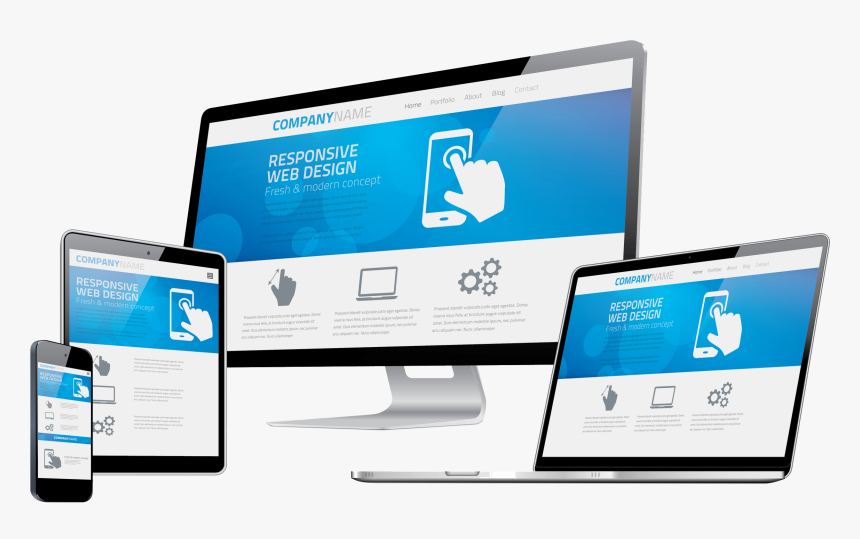How Can Mobile Website Design Affect Traffic?
As mobile has become the dominant way users worldwide participate in social media, buy products, and access the Internet, good mobile website design has become critical. Today, 77% of American adults own smartphones — just a hair less than the 78% who own a desktop or laptop computer. In fact, a full 12% of Americans have given up home broadband entirely, and depend completely on their smartphones to access the Internet. With millennials’ insistence on accessible, efficient mobile app design, those numbers are only going to grow.
But mobile web design doesn’t just affect the way your users interact with your site, or how much they use it. It also affects the traffic to your website, and, therefore, your business leads.
Google Has Been Pushing For a Better Mobile Experience
For web developers, marketers, and search engine optimizers, 2015 will be remembered as the year of Mobilegeddon. That might be tongue-in-cheek, but the panic was real. On April 21, Google rolled out its biggest update yet, designed to strongly encourage mobile-friendly websites by lowering the rankings of those that were designed for desktop only. Many businesses weren’t ready.
Although mobile UX was already very important to users, a lot of companies still lagged behind in mobile design because it wasn’t a major factor in how Google ranked pages. On sites that didn’t offer responsive design or a separate mobile site, cellphone and tablet browsers would find themselves looking at what was basically a small section of a monitor screen. They’d have to squint to read small fonts and use horizontal and vertical scrolling to read through the rest of the page or search for buttons.
Fortunately, Google wasn’t trying to catch anybody by surprise. They sent out messages through Webmaster Tools to sites that would be affected and provided testing tools to screen sites for good mobile design. And Mobilegeddon was strictly pass/fail. Add a mobile-friendly theme, tweak the layout, and congratulations, you survived the apocalypse!
But Google has continued to work on more sophisticated ways to weigh mobile website design in its rankings. The biggest news is the coming switch from a desktop-first index to a mobile-first index. Google is re-crawling websites, and indexing them from the perspective of a mobile user. Having a good “m-dot” domain won’t cut it, either. Google will be browsing your primary domain, assuming it’s built for mobile. Without responsive design that adapts to the platform, your Google rankings and your traffic will suffer. You need to avail the assistance of a website design company in the DUBAI UAE that can guide you better and provide website design services in the DUBAI UAE as well.
Social Media Is Following Suit
If Google’s performance is the biggest factor in getting traffic to your site, social media shares are a close second, driving 31% of all referral traffic. And in the long run, they may be more important to sustaining your brand. A MarketingSherpa study found that 85% of American consumers use social media, and 58% follow brands. Those followers are great leads themselves, and they spread your brand to their own network, meaning more leads.
Social media traffic has traditionally followed different rules than getting Google traffic. Facebook, Twitter, and Pinterest don’t crawl the web and index every site the way Google has; they’re more concerned with factors like your follower count, and how users are engaging with your feed. However, Facebook’s newsfeed is now starting to prioritize sites that load quickly on mobile, factoring both website speed and the user’s network. Like Google, they’re starting with pretty basic mobile factors, but there’s a lot more on the way.
Users Respond Better to Mobile-Friendly Websites
Users have little patience for bad UX, in fact, it can actually physically stress them out. According to the 2016 Ericsson Mobility Report, a single-second delay in loading a website or video results in a 38% increase in heart rate. Users given a task showed increased levels of stress when videos delayed loading or paused during playing, and multiple delays would cumulatively raise stress higher.
This affected brand engagement directly. Ericsson measured changes in Net Promoter Score (NPS) — a metric of how likely users are to recommend the company’s products and services. Their goal was to look at how delays affected NPS for the mobile service provider (a lot!), but they found out that users with long delays (6 seconds) actually felt better about their service provider than those with medium delays (2 seconds). The reason? They’d started to blame the content provider. In other words, if your website loads really slowly, your users will stop grumbling about Verizon or Comcast, and start grumbling about you.
This affects visitors so much that Google has updated its Test My Site tool to compare your speed to competitors and estimate how much traffic you’re losing through slow performance. Google estimates that an increase in page load time from 1 second to 3 seconds makes users 32% more likely to bounce (leave without viewing any other pages). Add just three more seconds, and the number goes up to 106%. Those bounces are still traffic, but they’re not good leads. And if they give up after waiting for your site to load, they probably never will.
In conclusion, no matter how innovative your app is or how special your product is, your mobile website design plays a huge role in how users (and Google) see you. Put in the work to get user feedback, test it, tweak it, test it, and tweak it again, and it will deliver the leads you need.












